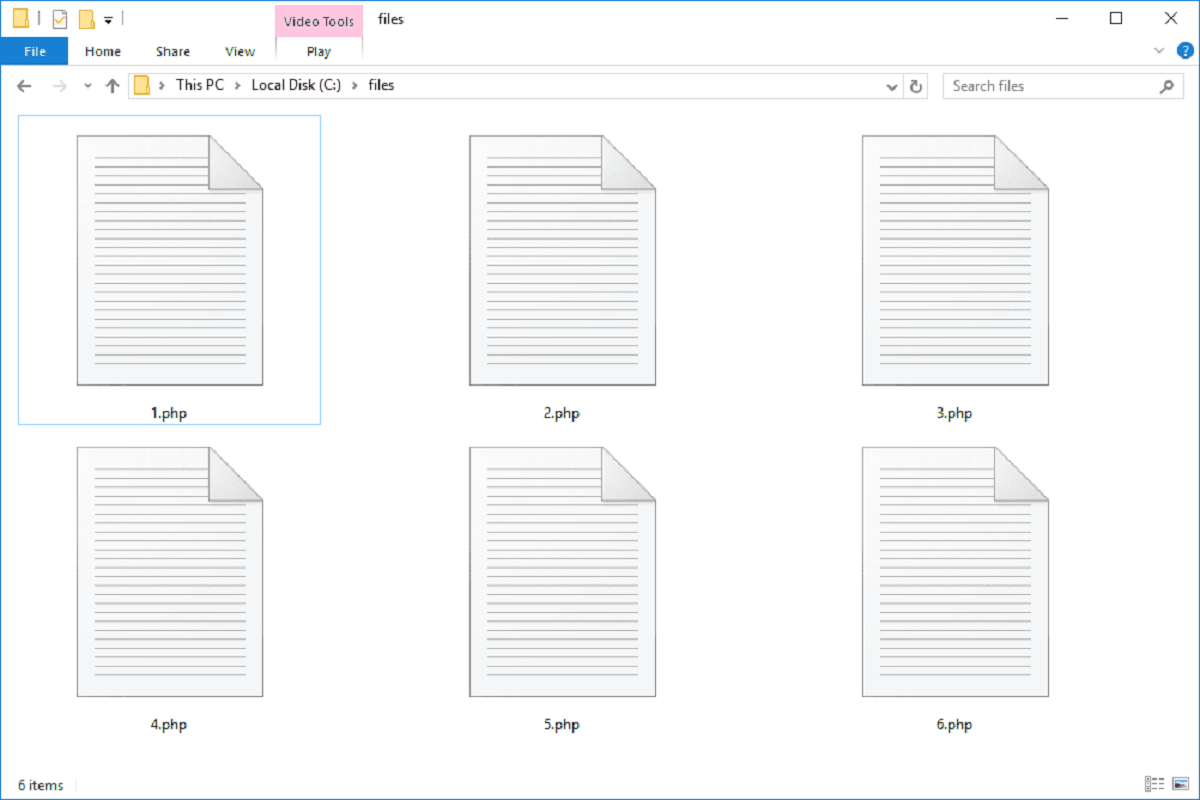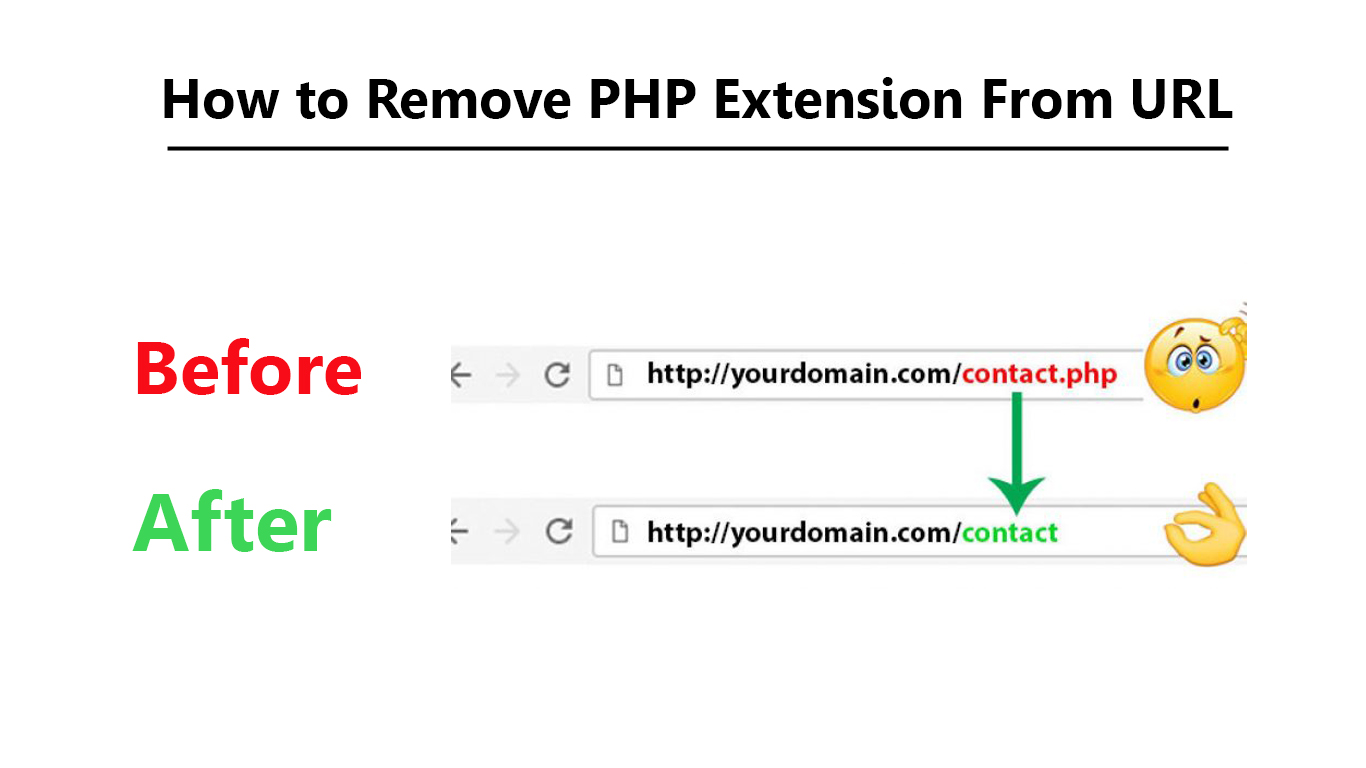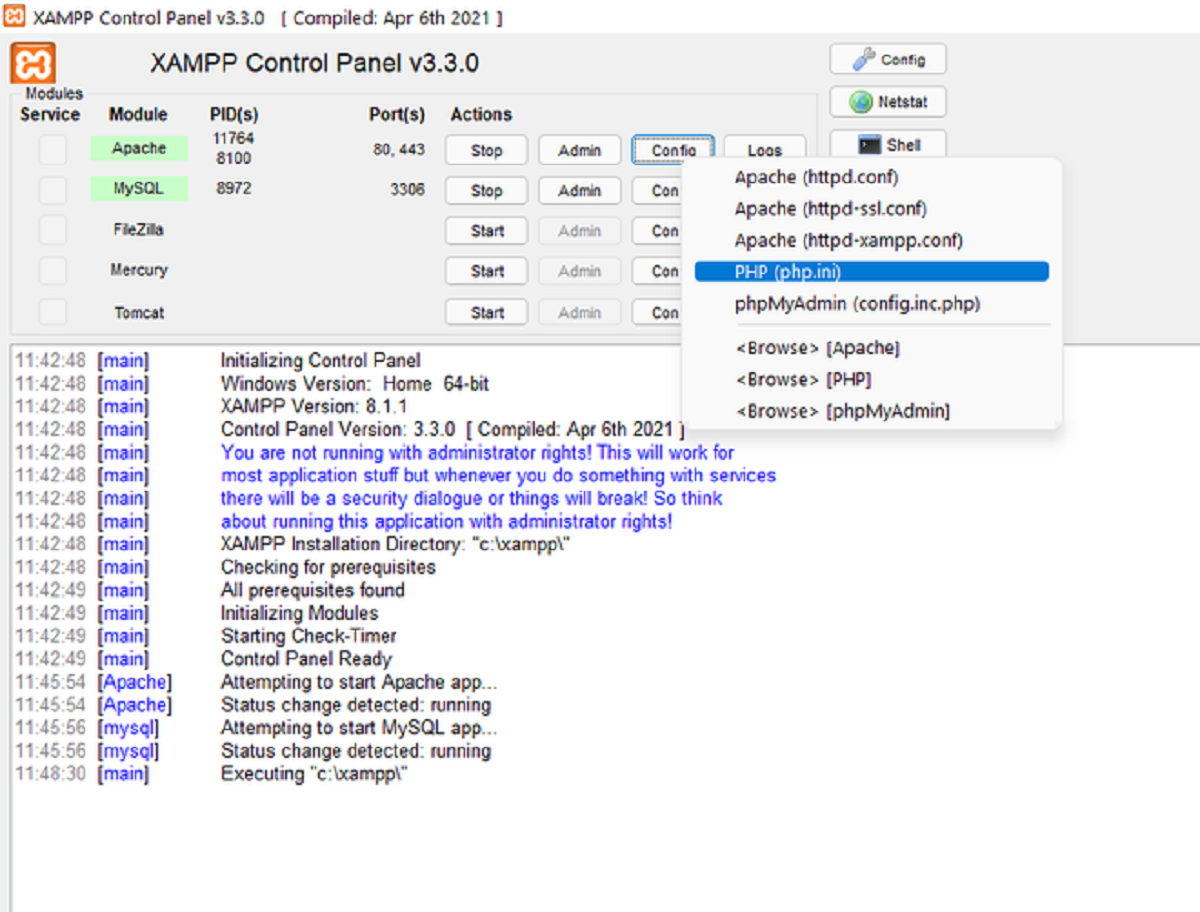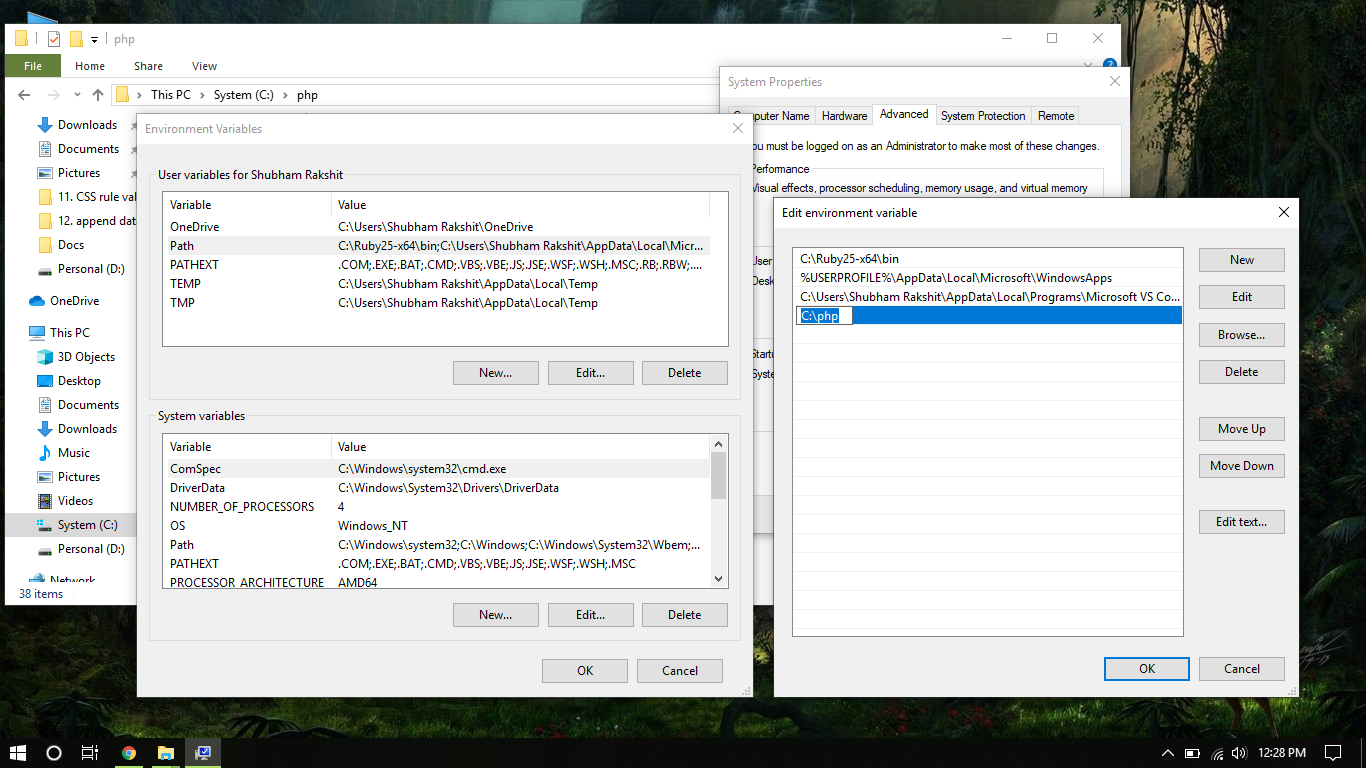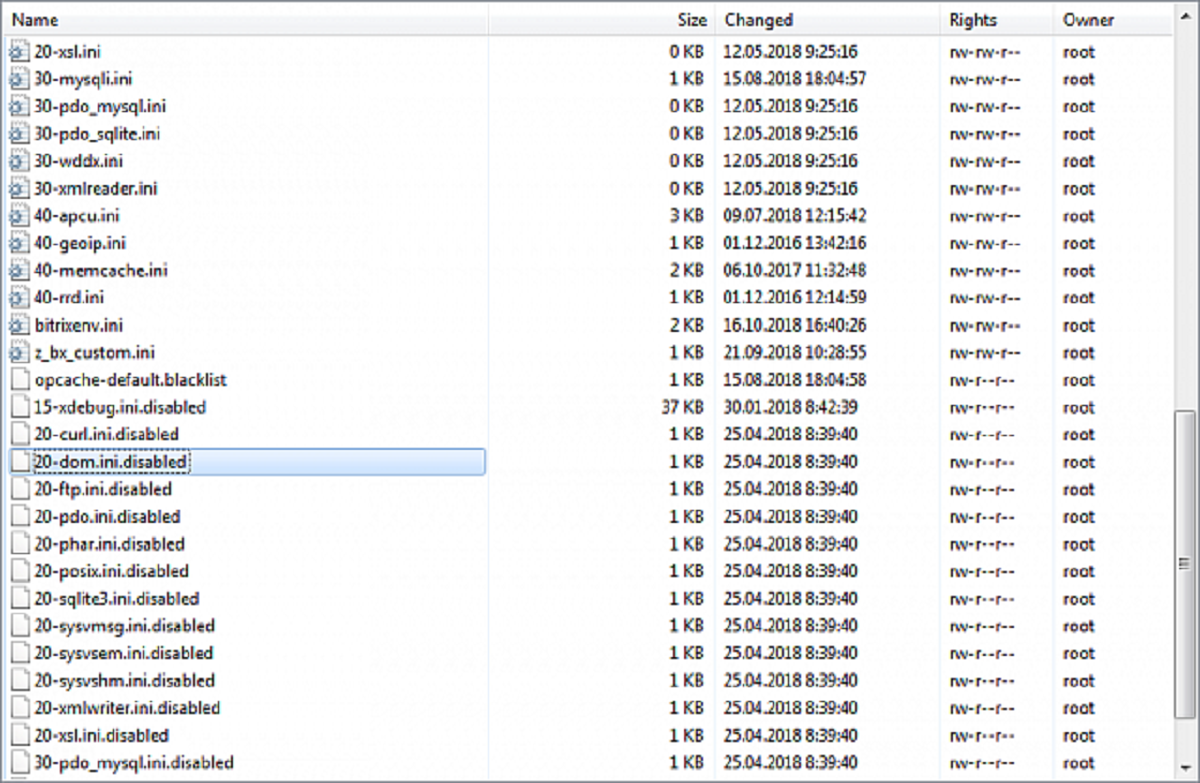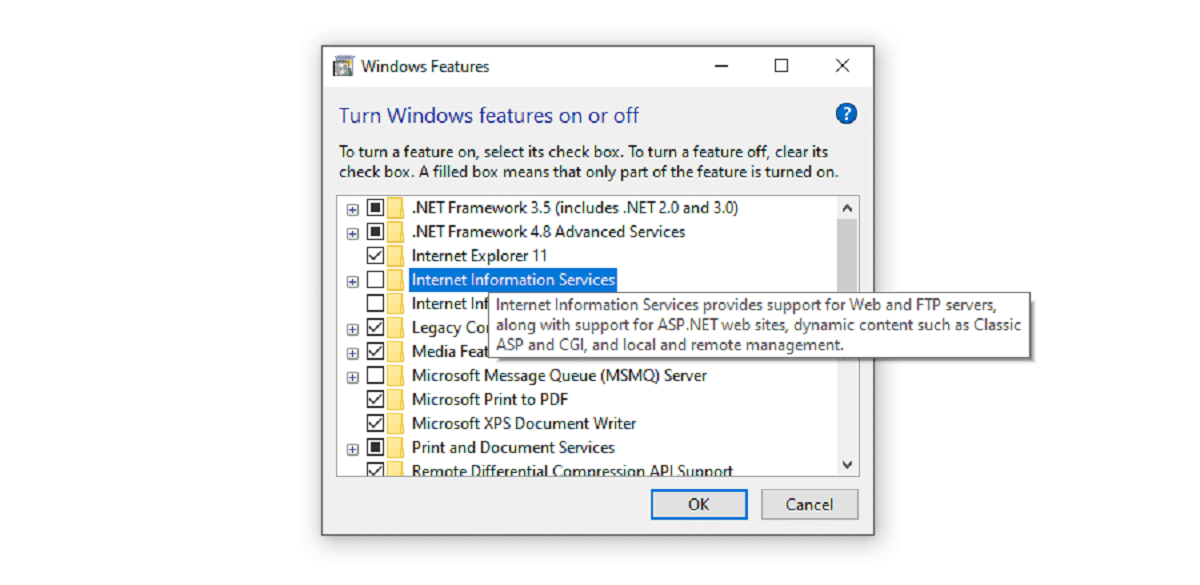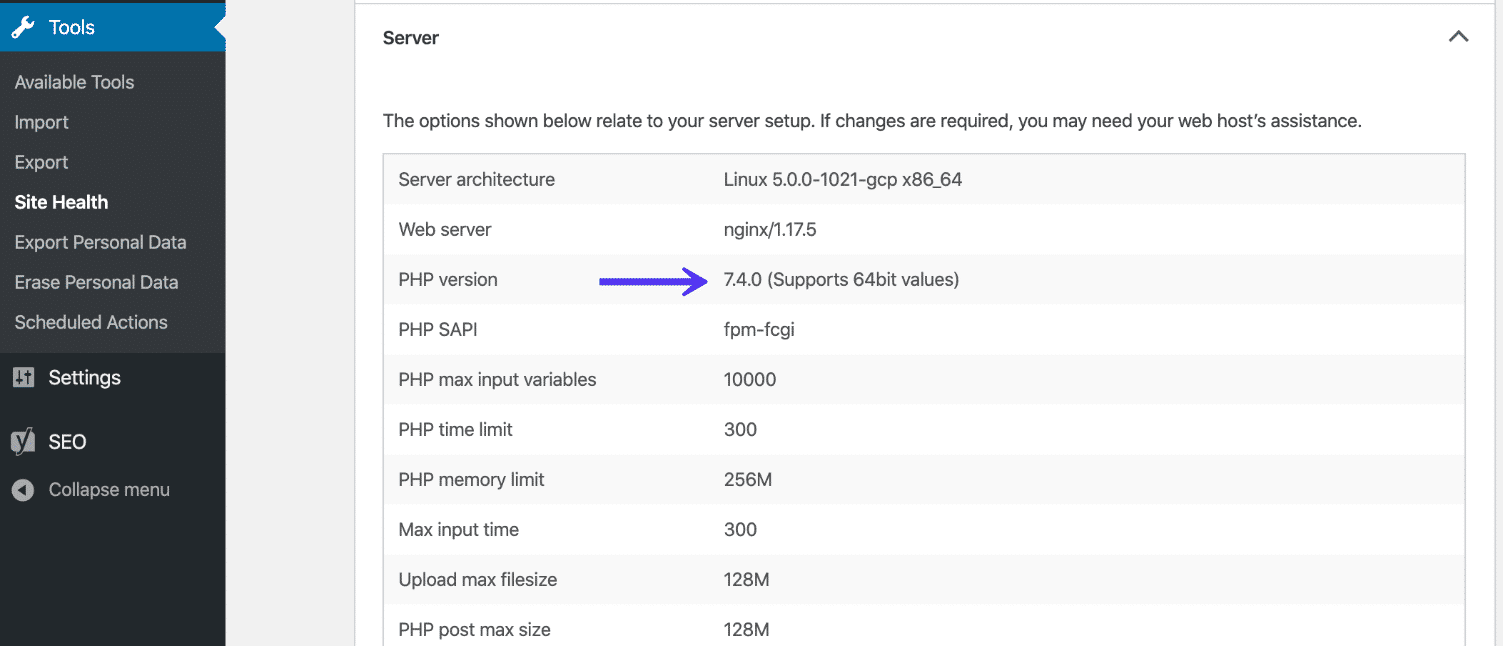Introduction
Welcome to the world of file extensions! If you have ever come across the term “file extension PHP” and wondered what it means, you’ve come to the right place. In this article, we will unravel the mystery behind the PHP file extension and explore its significance in the digital realm.
Before we dive into the specifics of a PHP file extension, let’s start by understanding what a file extension is and how it relates to different file types.
A file extension is a set of characters that appear at the end of a file name, separated by a period. It serves as a way to identify the file’s format and determine the appropriate program or software to open and handle it. For example, “.docx” indicates a Microsoft Word document, while “.jpg” signifies an image file in JPEG format.
Now that we have a basic understanding of file extensions, let’s focus on PHP. PHP, which stands for Hypertext Preprocessor, is a popular scripting language used primarily for web development. It provides web developers with a powerful and flexible tool to create dynamic web pages and interactive applications.
How does PHP work? PHP code is embedded within HTML code, allowing for a seamless integration of dynamic elements into web pages. When a web page containing PHP code is requested by a user, the server processes the PHP code, generates the HTML output, and sends it back to the user’s browser.
The versatility of PHP lies in its ability to interact with databases, handle forms, manipulate files, and perform various other server-side tasks. It also offers a wide range of built-in functions and frameworks, making it easier for developers to write efficient and secure code.
So, why should you consider using PHP for your web development needs? The benefits are numerous. First and foremost, PHP is an open-source language, meaning it is free to use and has a vast community of developers who contribute to its growth and improvement. This results in a constant stream of updates, bug fixes, and new features.
Furthermore, PHP supports multiple platforms and databases, making it compatible with various operating systems and database management systems. The language also boasts excellent connectivity options, enabling seamless integration with popular databases like MySQL, Oracle, and PostgreSQL.
Another advantage of PHP is its speed and efficiency. The language is designed to be fast and lightweight, allowing for quick processing and rendering of web pages. This is crucial in today’s fast-paced digital landscape, where users expect instant access to information.
Now that we have explored the benefits and workings of PHP, let’s delve into some common use cases of this powerful scripting language.
What Is a File Extension?
A file extension is a set of characters that appear at the end of a file name, separated by a period. It serves as a way to identify the file’s format and determine the appropriate program or software to open and handle it. File extensions are a crucial aspect of the digital world as they enable compatibility and facilitate the smooth exchange of information across different systems.
File extensions typically consist of three or four characters, although some extensions may be longer. They are often indicative of the file’s content or purpose. For example, “.docx” indicates a Microsoft Word document, while “.jpg” signifies an image file in JPEG format. These extensions help computers recognize and categorize files, allowing users to access and work with them more efficiently.
File extensions play a crucial role in enabling cross-platform compatibility. Different operating systems may have different default programs or applications for handling specific file types. For example, a file with the “.xlsx” extension can be opened by Microsoft Excel on a Windows computer, while Numbers on a Mac may handle it differently. By examining the file extension, the operating system can determine which program to use to best display or interact with the file.
File extensions also impact the security and integrity of files. Some extensions, such as “.exe” or “.bat,” are commonly associated with executable files that can run code on a computer. These types of files may pose a potential risk if not handled carefully. Similarly, certain file extensions can only be opened by specific programs or may have restrictions on their usage. By recognizing file extensions, users can exercise caution and take necessary security measures when handling files.
In addition to identifying file formats, file extensions can provide useful information about a file even before opening it. For example, “.pdf” indicates a portable document format, which is commonly used for sharing documents that preserve their formatting across different platforms. Knowing the file extension can give users a quick indication of the file’s intended purpose or content, helping them organize and manage their files more effectively.
Overall, file extensions are a fundamental component of the digital landscape. They enable computers to identify and categorize files, determine the appropriate software for handling them, and provide information about the file’s format and purpose. Understanding file extensions is essential for efficient file management, cross-platform compatibility, and ensuring the security of digital assets.
What is PHP?
PHP, which stands for Hypertext Preprocessor, is a widely used server-side scripting language primarily designed for web development. It is an open-source language, meaning it is freely available and continuously updated by a large community of developers. PHP allows web developers to create dynamic and interactive web pages by embedding PHP code within HTML code.
One of the defining features of PHP is its ability to generate dynamic content. Unlike static web pages that remain the same for all users, PHP allows developers to incorporate variables, conditions, loops, and database queries into their code, resulting in personalized and responsive web experiences. This dynamic nature of PHP greatly enhances the interactivity and functionality of websites.
PHP is particularly suited for web development because it seamlessly integrates with HTML. PHP code is embedded within HTML files, usually enclosed in special tags: . When a user requests a web page containing PHP code, the server processes the PHP code and generates HTML output. This HTML output is then sent to the user’s browser, which displays the final web page.
PHP supports a wide range of databases, making it easy to retrieve, store, and manipulate data. It can interact with popular databases such as MySQL, Oracle, SQLite, and PostgreSQL, allowing web applications to efficiently manage and organize information.
Another advantage of PHP is its cross-platform compatibility. PHP code can run on various operating systems, including Windows, macOS, Linux, and Unix. This versatility allows developers to create web applications that can be hosted on different server environments, providing flexibility and scalability.
PHP is known for its simplicity and ease of use. Its syntax is similar to other programming languages like C, Java, and Perl, making it accessible for developers of different backgrounds. Additionally, PHP offers extensive documentation, tutorials, and a vast community of developers who are readily available to provide support and guidance.
Over the years, PHP has evolved and matured into a robust and feature-rich programming language. It offers a wide range of built-in functions and libraries, enabling developers to perform tasks such as file manipulation, form handling, and session management more efficiently. Additionally, there are numerous frameworks, such as Laravel, Symfony, and CodeIgniter, that further simplify the development process and enhance code organization.
In summary, PHP is a server-side scripting language that empowers web developers to create dynamic and interactive web pages. Its seamless integration with HTML, support for multiple databases, cross-platform compatibility, and user-friendly syntax make it an incredibly popular choice for web development projects of all sizes and complexities.
How Does PHP Work?
PHP is a server-side scripting language that works in conjunction with a web server to process and generate dynamic web pages. It follows a specific workflow to carry out this process, allowing for the seamless incorporation of PHP code within HTML files.
When a user requests a web page that contains PHP code, the following steps take place:
- 1. Web Server Receives the Request: The user’s web browser sends a request to the web server to retrieve a specific web page. The server identifies the request and recognizes that the file being requested has a PHP extension (e.g., .php).
- 2. PHP Processor Engages: The web server passes the PHP file to the PHP processor, which is a module installed on the server. The PHP processor is responsible for interpreting and executing the PHP code within the file.
- 3. PHP Code Execution: The PHP processor reads and interprets the PHP code embedded within the HTML file. It executes the code line by line, performing computations, database queries, and other operations as instructed by the developer.
- 4. HTML Output Generation: As the PHP code is executed, it generates HTML output. The PHP processor combines the HTML code and any dynamic content generated by PHP, such as the results of database queries or conditional statements.
- 5. HTML Sent to the User’s Browser: The PHP processor sends the final HTML output back to the web server. The server then delivers the HTML code to the user’s web browser.
- 6. Web Page Displayed: The user’s browser receives the HTML code and renders it, displaying the final web page on the user’s screen. The user can interact with the dynamic elements created by the PHP code.
PHP seamlessly integrates with HTML, allowing developers to embed PHP code within HTML files using special tags. These tags, , indicate to the PHP processor where the PHP code starts and ends. The PHP code can access data from databases, manipulate files, handle form submissions, and perform various other server-side tasks.
Moreover, PHP supports session management, allowing developers to store and retrieve information about a specific user across multiple pages or sessions. This feature is crucial for building interactive web applications that require user authentication, shopping carts, or personalized experiences.
The flexibility and power of PHP lie in its ability to interact with databases, incorporate external libraries, process user input, and generate dynamic content. Its server-side nature ensures that sensitive logic and data processing occur on the server, enhancing security and protecting the integrity of web applications.
In summary, PHP works as a server-side scripting language that seamlessly integrates with web servers to process and generate dynamic web pages. By executing PHP code, it generates HTML output that is sent to the user’s browser for display, allowing for the creation of interactive and personalized web experiences.
Benefits of Using PHP
PHP, which stands for Hypertext Preprocessor, offers numerous benefits that make it a popular choice for web development. From its flexibility and simplicity to its extensive functionality and large community support, PHP provides a range of advantages for developers and businesses alike.
Here are some of the key benefits of using PHP:
- 1. Open-Source and Free: PHP is an open-source language, meaning it is freely available to anyone to use, modify, and distribute. This accessibility has led to a vast community of developers who contribute to its growth and improvement. The open-source nature of PHP also means that updates, bug fixes, and new features are constantly being developed by the community.
- 2. Platform Independence: PHP is compatible with various platforms, including Windows, macOS, Linux, and Unix. It can run on almost any operating system, making it flexible and adaptable to different server environments. This cross-platform compatibility enables developers to create applications that can be deployed on a wide range of systems.
- 3. Database Support: PHP has excellent database connectivity and supports various database management systems, including MySQL, Oracle, SQLite, and PostgreSQL. This seamless integration allows developers to easily retrieve, store, and manipulate data and build robust web applications that interact with databases efficiently.
- 4. Extensive Functionality: PHP offers a wide range of built-in functions and libraries that simplify web development tasks. These functions empower developers to handle tasks such as file manipulation, form handling, image processing, and encryption with ease. Additionally, PHP has a vast ecosystem of third-party libraries and frameworks that further enhance its functionality and speed up development time.
- 5. Rapid Development: PHP’s simplicity and ease of use make it a favorite among developers for rapid application development. Its syntax is straightforward and familiar to those with a background in programming languages like C, Java, or Perl. The abundance of documentation, tutorials, and community support further accelerates the learning curve, allowing developers to quickly start building web applications.
- 6. Performance: PHP is designed to be lightweight and fast. It has a built-in caching mechanism that optimizes performance by storing compiled code in memory, reducing the need for processing the same code repeatedly. Additionally, PHP is highly scalable, enabling applications to handle high traffic volumes without significant performance degradation.
- 7. Community Support: PHP has a large and active community of developers that contribute to its growth and offer support to others. This community provides a wealth of resources, including forums, online communities, tutorials, and code libraries. Developers can easily seek help, share knowledge, and collaborate on projects, making PHP a collaborative and well-supported language.
These benefits, among others, make PHP a versatile and compelling choice for web development. Its open-source nature, cross-platform compatibility, extensive functionality, rapid development capabilities, performance optimizations, and strong community support contribute to its popularity and widespread adoption.
Common Uses of PHP
PHP, the powerful server-side scripting language, is widely used for a variety of web development purposes. Its versatility and extensive functionality make it a popular choice among developers for creating dynamic and interactive web applications. Here are some of the common use cases of PHP:
- 1. Website Development: PHP is extensively used for building websites of all sizes and complexities. It enables developers to create dynamic web pages by embedding PHP code within HTML. From simple personal blogs to large e-commerce platforms, PHP provides the necessary tools and functionality to develop engaging and user-friendly websites.
- 2. Content Management Systems (CMS): Many popular content management systems, such as WordPress, Joomla, and Drupal, are built on PHP. PHP’s flexibility and extensibility make it an ideal choice for developing CMS platforms that allow users to easily create, edit, and manage digital content without in-depth technical knowledge.
- 3. E-Commerce Platforms: PHP is widely used in the development of e-commerce platforms and online shopping websites. Its seamless integration with databases, such as MySQL, allows for efficient management of product catalogs, user accounts, shopping carts, payment gateways, and order processing.
- 4. Web Applications: PHP is well-suited for building web applications that require user interactivity and complex functionality. From social media platforms and discussion forums to online booking systems and customer relationship management (CRM) tools, PHP’s ability to handle data manipulation, form processing, and database connectivity makes it an excellent choice for developing a wide range of web applications.
- 5. APIs and Web Services: PHP can be used to develop Application Programming Interfaces (APIs) and web services that allow different software applications to communicate with each other. APIs built with PHP enable developers to expose functionalities of their applications for third-party integration, promoting interoperability and expanding the reach of their systems.
- 6. Data Visualization: PHP can be used to generate dynamic charts, graphs, and visualizations by combining PHP code with libraries like Chart.js, Google Charts, or D3.js. This enables developers to present data in an interactive and visually appealing manner, enhancing the user experience and facilitating better data analysis.
- 7. Command-Line Scripts: With PHP’s capability to run on the command line interface (CLI), developers can create scripts to automate tasks, perform system administration, or process large amounts of data. PHP’s powerful features, such as file manipulation and string handling, make it a valuable tool for performing various operations through the command line.
These are just a few examples of the myriad of ways PHP can be utilized in web development. From static websites to complex web applications, PHP’s flexibility, extensive libraries, and supportive community make it a preferred choice for developers seeking to create dynamic and feature-rich online experiences.
File Extension PHP
The file extension PHP is an integral part of web development, specifically associated with files that contain PHP code. This file extension is used to identify PHP scripts, which are files that include server-side scripting code written in PHP.
When a file has the extension .php, it indicates that it contains PHP code that needs to be processed by a web server with PHP support. The PHP code within the file is executed by the server, generating dynamic content, and producing HTML output, which is then sent to the user’s web browser for display.
PHP code within a .php file is enclosed within ‘‘ tags. These tags allow for the separation of PHP code from HTML code, making it easier to integrate dynamic elements into web pages. Within the PHP code, developers can leverage PHP’s extensive functionality, such as performing calculations, interacting with databases, manipulating files, and handling user input.
One of the key advantages of using the PHP file extension is the ability to create dynamic and interactive web pages. By embedding PHP code within HTML, developers can generate personalized and responsive content based on user inputs, database queries, or other custom logic. This dynamic nature allows websites to provide a more engaging and tailored experience to users.
Furthermore, the PHP file extension offers compatibility with various web servers and operating systems. PHP can run on popular web servers like Apache, Nginx, and Microsoft IIS, and is supported across different platforms, including Windows, macOS, Linux, and Unix. This flexibility ensures that PHP scripts can be deployed and executed on a wide range of server environments.
In addition to its compatibility, the PHP file extension integrates seamlessly with databases. PHP supports multiple database management systems, including MySQL, Oracle, SQLite, and PostgreSQL, allowing developers to interact with databases and perform tasks like data retrieval, storage, and manipulation with ease.
Overall, the PHP file extension plays a crucial role in web development by identifying files that contain PHP code. It enables developers to create interactive and dynamic web pages by seamlessly integrating server-side scripting within HTML files. The extensibility, compatibility, and database support of PHP make it a popular choice for building feature-rich web applications.
Conclusion
In conclusion, the PHP file extension holds significant importance in the world of web development. It identifies files containing PHP code, allowing for the creation of dynamic and interactive web pages. PHP, with its seamless integration with HTML, extensive functionality, and strong community support, offers numerous benefits for developers and businesses.
With PHP, developers can easily incorporate server-side scripting within HTML files, enabling the creation of personalized and responsive web experiences. The ability to interact with databases, handle form submissions, manipulate files, and perform other server-side tasks makes PHP a versatile choice for a wide range of web development projects.
PHP’s open-source nature and large community mean constant updates, bug fixes, and new features, ensuring the language remains up-to-date and secure. Its cross-platform compatibility allows for deployment on different server environments, while its support for various database management systems makes data management efficient and straightforward.
Moreover, PHP’s simplicity and ease of use enable rapid development of web applications, thanks to its familiar syntax and comprehensive documentation. The extensive functionality of PHP, combined with the availability of third-party libraries and frameworks, further enhances its capabilities and accelerates development time.
The PHP file extension is the gateway to robust web development, empowering developers to build websites, content management systems, e-commerce platforms, web applications, and more. Its seamless integration, coupled with its ability to generate dynamic content, makes it a powerful tool for creating highly functional and interactive digital experiences.
In conclusion, the PHP file extension and the language itself have revolutionized web development, making it accessible, efficient, and dynamic. With PHP, developers can unleash their creativity and build websites and applications that engage users, process data seamlessly, and deliver personalized experiences in the ever-evolving digital landscape.







